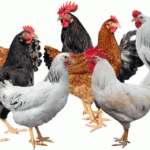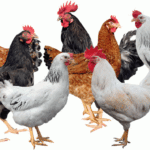Poultry farming in Kenya is one of the fastest growing agribusiness sectors in the country. The demand for the poultry products is growing at an exponential rate because millions of Kenyans can now afford to eat chicken on a regular basis. Additionally, there is very growth in the number of farmers venturing into poultry farming.
Most of the poultry in Kenya is still being consumed in the fast food joints across Kenyan urban centres where there is a seemingly unlimited demand for the poultry products. This is in places such as restaurants, fish and chips and many other eateries out and about town. There is a significant part of this which is consumed in hotels ranging from the simplest of shacks to the five-star hotels, resorts and camping areas. Still, there are sophisticated poultry marketers who have discovered the export market for the poultry products.
Making Profits with Poultry Farming in Kenya
If you are planning to venture into poultry farming in Kenya, here is a surefire way in which you can make profit. Let us show you the path to profitability and great returns from your poultry farm:-
What You Will Need
- You need land: At least 40ft by 60 ft
- You Need a Housing Structure: Allocate a Budget of at Least Ksh.40,000
- Start with 100 Day Old Chicks: These will cost you Ksh.10,000
- Chicken Feeds
- Vet Products and Miscellaneous
Land
Choose a piece of land that is situated at least 40 feet from the main house. It should be situated in a secure and well drained area. For some biosecurity, it is advisable to have it amongst trees . It should be in a place that you could easily fence in case you will also be constructing a chicken run.
Housing Structures
These are built according to the chicken density. The first question which we often ask the potential investors is “how ambitious are you?” I don’t believe in building housing structures for your poultry in stages. So you need to determine your threshold based on the peak number of poultry that you plan to rear. For example, if you are planning to rear a maximum of 500 in the near future, then you will need a cage of size of at least 50ft by 10ft or 50 feet by 12 feet.
The recommended density is generally 1 square feet per bird. There is a certain way in which you should build the chicken cages. Check our Kienyeji Housing Manual for tips on how you can get the process right. Generally, the orientation should be East-West and you need to leave some ventilation space at the top which is covered in wire mesh. This should be at least 3 feet although you can also have 2.5 feet. Below this should be 4-4.5feet of solid material such as timber offsets, iron sheets, bricks, concrete or even clay material.
The Day Old Chicks
The best way to ensure you are getting the best value chicks is by buying from reputable breeders and hatcheries that will assure you of the best. What kind of poultry breeds do you want? There are the KARI improved kienyeji chicks, the Kuroiler chicks, the IndBro brown layers, the Fast white layers, and the Rainbow Rooster chicks. These are hardy breeds that you can opt for if you are planning to go the free range way. You can also purchase the layers and broilers which mature very fast and start delivering the profits. The price of the day old chicks varies from Ksh.100 to Ksh.110.
Chicken Feeds
Feeds are generally the main expenditures for any Kienyeji farmer. They can gobble up to 65% of the cost of rearing the hens. If you can take time to learn Poultry Feed Formulation on your own, you will be able to cut down on the costs of feeding by as much as 70%.
Vet Products
Keep a reserve budget just in case there is an outbreak of diseases. Follow the poultry vaccination schedule and ensure your chicks are vaccinated on time against common poultry diseases prevalent in your area. You can consult a professional agrovet for advice on this.
Returns
With good rearing and management, at least 90% of your chicks should survive. Assuming 80 of these are layers and 10 are cockerels, you should be able to begin generating a very fast income within only a few months. For example, consider that each of the hens will lay 300 eggs during their laying cycle of 72 weeks, you will be looking at over 24,000 eggs produced during that period. If the eggs are fertilized, you can now sell them at almost triple the price of between Ksh.25 to Ksh.30.
By continuously adding chicks after every cycle, you can continue multiplying your flock and your profit. It is very difficult not to make a profit from your poultry farming venture.


